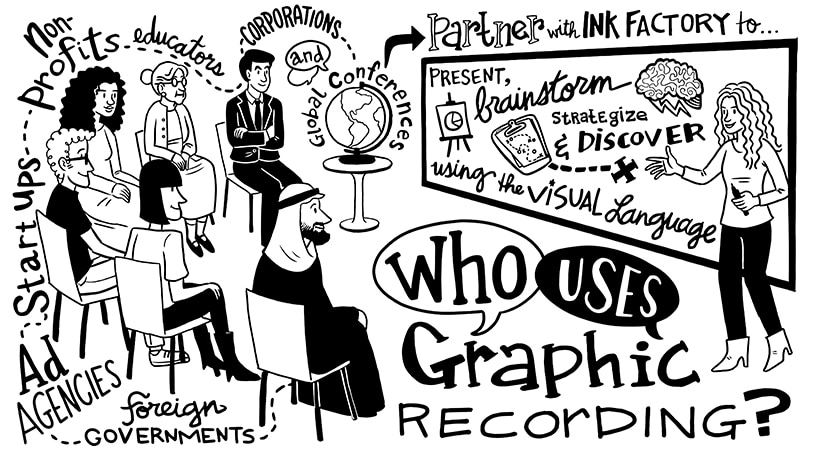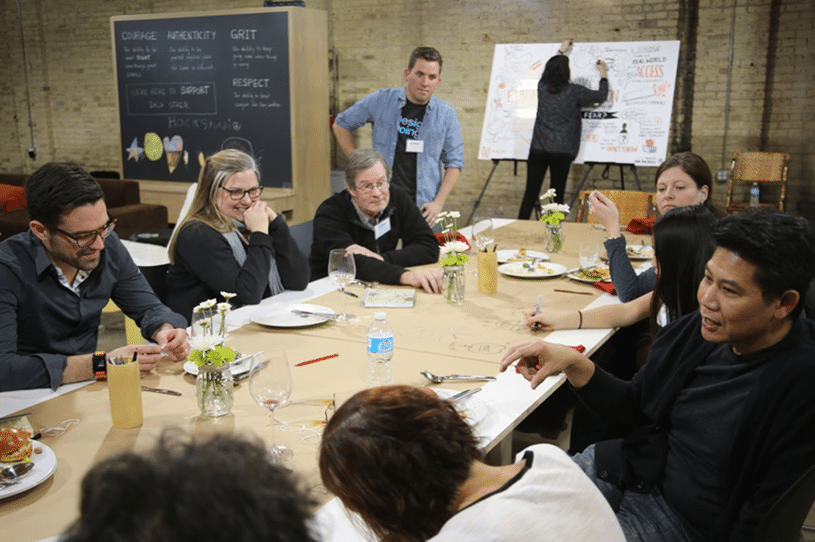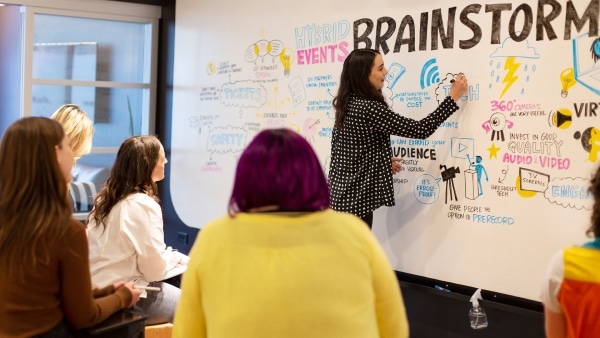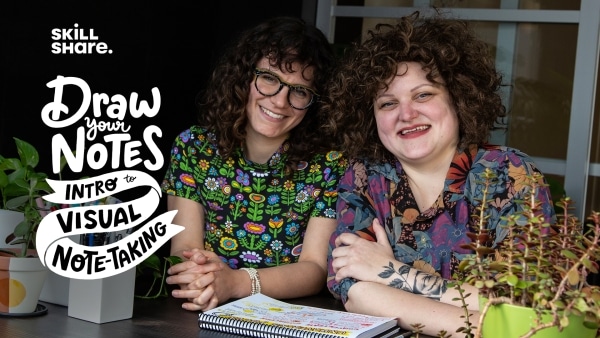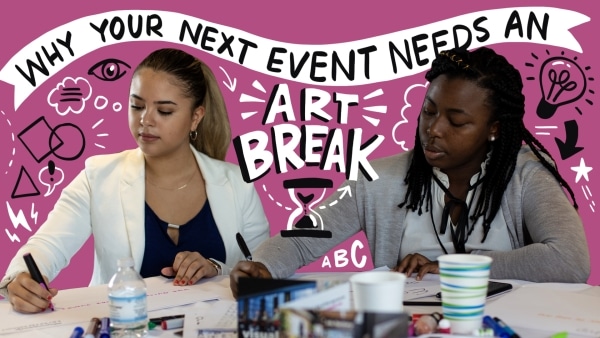
What is Graphic Recording?
We created this series of four illustrations to answer common questions related to our field – what exactly is graphic recording (aka visual note-taking)? Why should I use it? Who else uses it? And how the heck do you guys do it?
What is Graphic Recording?
Utilizing visuals while presenting information helps people to create bookmarks in their brains. It's easier to remember a drawing of a tower crane laying a building's framework than it is to remember the words "build support". People remember 80 percent of what they see, 10 percent of what they hear, and 20 percent of what they read. Use graphic recording to retain the maximum amount of information!
Why use Graphic Recording?
Information is important, but remembering and comprehending information is more important. Our visuals increase data retention, build group genius, and pique interest and engagement to promote a better understanding of content.Graphic recording also helps to motivate employees. The brain processes visuals and emotions in the same area, so people are more prone to excitement upon seeing information come to life. An overload of information can feel daunting to employees, but breaking it down into visuals makes for easy processing and reacting.
With quick reactions from your employees, gathering feedback becomes much easier. Participants are more likely to engage and offer feedback if they're interested in the information and visual notes are the perfect way to pique that interest.
When content is interesting, it's much easier to retain. Ink Factory artists are skilled in making content exciting. A dry conversation about changing stock prices can be visualized by drawing a piggy bank next to a line graph. "Inventory tracking" could be represented by a drawing of a hand holding up a magnifying glass to a bar code.
Who uses Graphic Recording?
To read more about who is using graphic recording, check out our blog.
How do we Graphic Record?
Our artists are often told that everyone on our team has very similar handwriting. This is because we were trained to write in all capital letters. Writing in all caps is a great way to standardize spacing around your letters which makes them easier to read.
Wait, there’s more!
Subscribe to the Ink Factory newsletter to learn the latest on visual thinking & communication. With a community of 4,000+ visual thinkers, you’ll be in good company. Join us!




